巻号一覧

18 巻, 9 号
選択された号の論文の5件中1~5を表示しています
- |<
- <
- 1
- >
- >|
-
堀 正1969 年18 巻9 号 p. 393-398
発行日: 1969/09/15
公開日: 2009/11/25
ジャーナル フリーPDF形式でダウンロード (704K) -
中性溶液中における鋼の自己分極曲線久松 敬弘, 増子 昇1969 年18 巻9 号 p. 399-403
発行日: 1969/09/15
公開日: 2009/11/25
ジャーナル フリーConcentrations of dissolved oxygen in 3% NaCl solution filled in a closed vessel containing a corroding steel specimen were determined periodically by the polarographic technique. The specimen had been heated at 200°C for 10hr to grow oxide film. As the concentration of oxygen decreased, the rate of oxygen consumption and the corrosion potential of the steel decreased. When oxygen concentration fell to about 1ml/l, the solution was renewed by a fresh one containing oxygen of the predetermined concentration. This operation was repeated at 25°C until a steady state was observed.
Under the experimental conditions, the amount of oxygen consumed was found equivalent to that necessary for oxidizing iron to ferric state. Then corrosion rate of the steel can be derived from the rate of oxygen consumption.
Plots showing the relation between corrosion potential and corrosion current at varied oxygen concentrations give, in the steady state, a straight line on E vs. log i diagram. This is the anodic polarization curve. A line connecting the plots corresponding to the same oxygen concentration gives a cathodic polarization curve, since plots are on the locus of the change of corrosion potential with immersion time of the specimen which corrodes at that oxygen concentration accompanied by breakdown of the oxide film.抄録全体を表示PDF形式でダウンロード (625K) -
吸着基中心原子の持つ活性水素の防食効果への影響 (その1)藤井 晴一, 田辺 弘往, 前田 浩1969 年18 巻9 号 p. 404-410
発行日: 1969/09/15
公開日: 2009/11/25
ジャーナル フリーLauric acid amide, N-methyl lauric acid amide, N, N-dimethyl lauric acid amide, laurylamine, N-methyl laurylamine, N, N-dimethyl laurylamine, cetylmercaptan, and methylcetyl sulfide were examined as corrosion inhibitors for metals in 5% HCl aqueous solution. Lauric acid amide is a less effective inhibitor than its methyl derivatives, while primary laurylamine is more inhibitive than methyl derivatives of the amine.
Lauric acid amide cannot be adsorbed on metal surface because of molecular association but laurylamine which should be associated can effectively be adsorbed. Although both the amide and the amine have active hydrogen atoms attached to nitrogen atoms, their adsorption behaviors on metals are different from each other. The hydrogen atoms of the amide are so active that the molecules are associated by hydrogen bonding, while those of the amine are not so active, resulting in, the good adsorption.
Mercaptan, containing an active hydrogen, is difficult to be associated because of weak protonaccepting ability of sulfur atom. And, at room temperature cetylmercaptan is hardly adsorbed on the metal surface, but still keeps higher inhibition effect than methylcetyl sulfide in spite of poor adsorption of sulfur atom by donating electron-pair to the metal surface at this temperature.
These results suggest two types of adsorption mechanism of the inhibitor molecules on the metal surface: adsorption by electron-donation of the adsorbate radical, as reported previously, and one by proton-donation of the radical.抄録全体を表示PDF形式でダウンロード (911K) -
W. D. France, N. D. Greene, 鈴木 紹夫1969 年18 巻9 号 p. 411-414
発行日: 1969/09/15
公開日: 2009/11/25
ジャーナル フリーPDF形式でダウンロード (1204K) -
柴田 俊夫1969 年18 巻9 号 p. 415-429
発行日: 1969/09/15
公開日: 2009/11/25
ジャーナル フリーPDF形式でダウンロード (1759K)
- |<
- <
- 1
- >
- >|